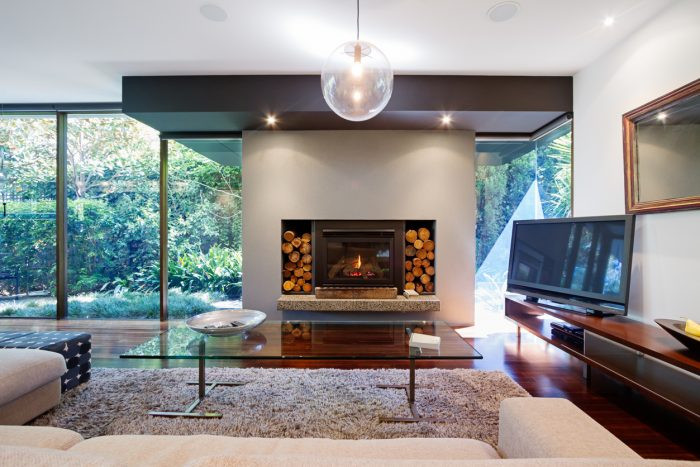How to Determine the Number of Downlights for Every Room
Downlights represent an effective way to illuminate both large and small areas in the home while maintaining maximum control over the end result. With the introduction of LED downlights, more people are choosing this form of lighting in every room of the house. And why not? downlighting with LED bulbs is an energy-efficient way to light up a room.
The main challenge with downlights is determining how many to install in a given space. Too few lights mean insufficient illumination. Too many lights can make a room look flooded. Finding that right balance makes all the difference in the world. Thankfully, there are proven strategies for determining the exact number of downlights for every room in the house.
Getting Started
Before we get to looking at actual rooms, it should be noted that there are three basic steps to start with in every room. These are as follows:
- Determine the Focal Points – Every room has focal points. Some rooms have more than others. Focal points are the starting reference point for all forms of lighting. They are especially important for downlighting.
- Measure Ceiling Height – The key to making sure that downlights are not spaced too closely together is knowing ceiling height. The distance between lights is determined by taking the ceiling height and dividing by two.
- Measure Length and Width – You want to keep downlights far enough away from walls so that they don't create shadows. Measure the length and width of the ceiling, then subtract roughly 3 feet for each wall you are dealing with. This will tell you how much actual ceiling space you have to work with.
Completing these three steps will give you a starting point for determining the number of downlights to install in each room. Now let us look at some of the more common rooms individually.
The Kitchen
Much of what goes into kitchen downlights centres around workspaces. In other words, you are going to concentrate more downlights over the largest workspaces while being more sparse in other areas of the kitchen. Use the three starting steps to come up with a general number of lights, then add extras over workspaces as needed.
The Bathroom
Bathroom lighting should be functional first and foremost. There's no need to concentrate bathroom downlights in certain key areas like you do in the kitchen. Shoot for a more even distribution of light. Also keep downlights away from walls as any shadows they cast will make an already small space look smaller.
The Bedroom
Bedroom downlights should be used sparingly in order to maintain a more comfortable, relaxing, and lowlight experience. Downlights can be complemented with soft table lamps and accent lighting to create the perfect mood. As a general rule, downlights in the bedroom should illuminate main spaces. Arranging the lights around the perimeter of the room works well for this purpose.
The Living Room
In most homes, the living room is second only to the kitchen in terms of the amount of activity it sees. Unlike the kitchen, there are no dedicated workspaces in the living room that need concentrated lighting. Also note that the living room is often the largest room in the home.
Installing ceiling downlights in the living room starts with understanding focal points. You may not have any in your living room. If you do though, you might want to accent them with stronger lighting. Common focal points in the living room include fireplaces and dedicated sitting areas.
In any case, evaluate how the room is used along with how it is furnished. If there are no strong focal points you want to highlight, focus on a consistent, even lighting pattern that illuminates the entire space equally. This will create the warmest and most inviting mood. If you do have focal points you want to enhance, use fewer downlights in other areas of the space complemented by strategically placed table lamps.
A Complete Selection of Downlights
Remember, the starting point for determining the number of downlights in a given room is to follow the three basic steps listed at the start of this post. Take those steps and apply them to each room, taking into account the size, layout, and purpose of the spaces you are illuminating.
Also bear in mind that you do not have to use downlighting exclusively. Downlights can be combined with other types of lighting to create whatever environment you are looking for.
When you are ready to purchase, know that we have exactly what you need. From GU10 downlights to compact florescent lighting, our inventory offers something for every lighting need. You can search our website quickly and easily to find just what you're looking for.
Image credit: istockphoto.com
Recent Posts
-
Outdoor Lighting Safety: Using Standard Bulbs in Waterproof Fittings
Waterproofing and safety are paramount in outdoor lighting. Rain can infiltrate outdoor lighting sy …22nd Apr 2024 -
Waterproof and Stylish: Bathroom Ceiling Lights for Every Style
Choosing the right bathroom ceiling lights ensures both functionality and aesthetics, as they provi …9th Apr 2024 -
The Art of Welcoming: Porch Lighting Ideas for Every Home
Porch lighting helps create a welcoming atmosphere and enhances security by illuminating entryways …9th Apr 2024




